Caring for and maintaining a vegetable garden takes quite a bit of time and effort and is absolutely necessary for a good harvest. For most of us, growing vegetables is only something that we do as a hobby apart from our full-time jobs and responsibilities at home. This means that you likely have very little time and energy to invest in caring for and maintaining your vegetable gardens once your day’s work is done.
Taking the time to properly plan, prepare, and plant your vegetable garden will help your vegetable plants will be healthier and stronger. This will make them more capable of withstanding pests and diseases, meaning that caring for and maintaining your vegetable garden will require less time and effort in the long run.
Planning your vegetable garden
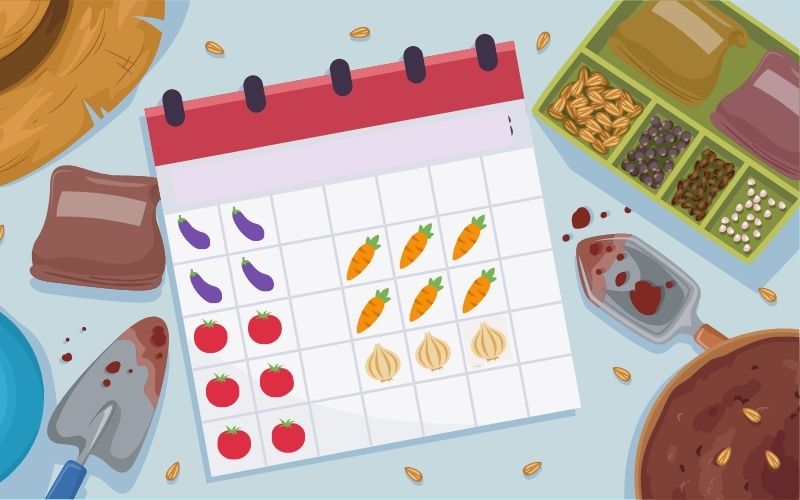
Properly planning your vegetable garden mainly involves choosing the right location and type of vegetable garden, as well as selecting to grow types of vegetables that are suitable for your climate, growing conditions, and the current season.
- Locate your vegetable garden where the needs of your plants can most easily be met
Choosing the right location for your in-ground vegetable garden is essential to ensure healthy, productive plants that are easy to care for.
Vegetable gardens must get enough sunlight to be productive. Different types of vegetables need different amounts of sunlight. Generally, most vegetables, including summer vegetables, need 6-8 hours of sunlight a day, while leafy greens and other more shade-loving vegetables can manage with 2-4 hours of sunlight a day.
Properly watered vegetable plants are able to take up enough nutrients and are better at fighting off diseases and pests. Your vegetable garden should also be located relatively near a source of water so that you can easily water your plants as and when needed.
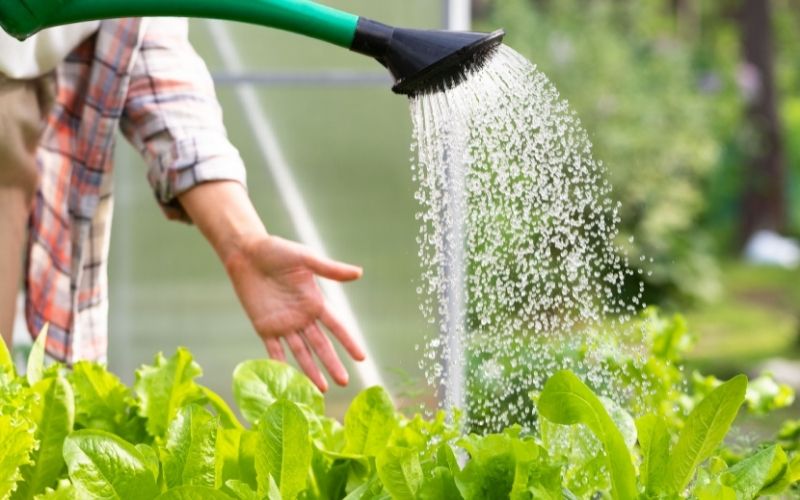
Good air circulation is also important for photosynthesis, which is the process through which plants make their own food. Proper air circulation also helps to prevent diseases and pests.
Another requirement is proper drainage, as most vegetable plants require well-draining soil. A slight slope moving away from your vegetable garden can help with drainage and prevent water from collecting in your vegetable garden. Despite this, steep slopes are not suitable for vegetable gardens as soil and nutrients may be washed away.
Finally, the soil needs to be healthy and alive with the correct balance of nutrients that plants need and soil organisms to break down and make the nutrients available to your plants. However, if the soil is lacking in health, nutrients, and life, you can add amendments, fertilizer, and mulch to help repair your soil.

- No suitable garden space? Grow a raised bed or container vegetable garden instead
In case you find that you don’t have enough suitable garden space to start an in-ground vegetable garden, you can also consider growing a raised bed or container vegetable garden.
Raised bed vegetable gardens offer a more controlled growing area for vegetable plants and may be a good alternative for people with poor garden soil, drainage issues, or contaminated soil.
Since the basic frame is already there, it’s easier to install pest or cold covers on raised beds and they make maintenance easier for people who have difficulty bending or reaching the ground. However, they can be more expensive to start than in-ground vegetable gardens due to the cost of installing the base and filling the beds, and there are limitations to their size.

Container vegetable gardens offer the flexibility of creating a garden in any location, regardless of whether or not there is actual garden space. Container vegetables can be placed in cemented or concrete areas, balconies, terraces, and rooftops.
Compared to in-ground vegetable gardens, starting a container vegetable garden will take more effort and is a bit more costly, but it is still easier and less expensive than starting a raised bed garden.
Before you start, you should know that container vegetables need more frequent watering, fertilizing, and maintenance. This is because everything your plants need should be in or around the limited amount of soil in the container. Pros and cons of growing vegetables in containers
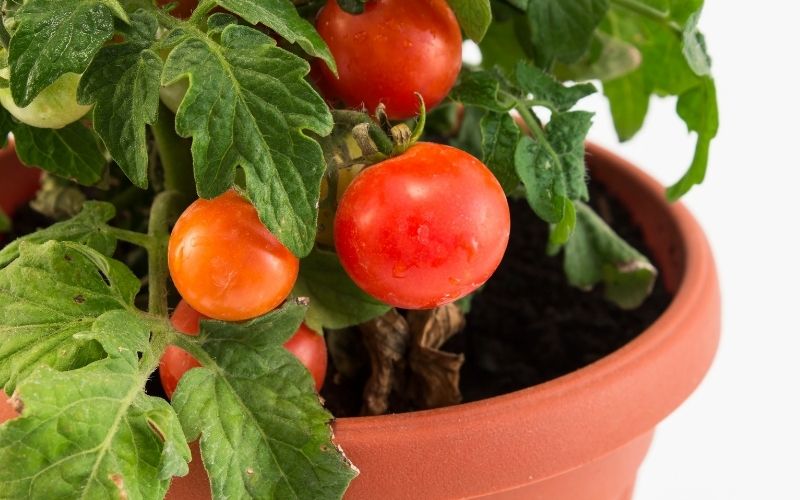
- Grow vegetables that suit your vegetable garden
Now that you know the type of vegetable garden you’ll be growing and its location, you’ll need to decide on the types of vegetables you’ll be growing. By choosing to grow vegetables that are most suitable for your garden, you’ll be able to grow a highly productive vegetable garden with the least amount of care and maintenance.
You can start by creating a list of vegetables you would like to grow, including those you eat regularly and those you’ve successfully grown in the past. The second step is to go over your list and remove any vegetables that aren’t suitable for your climate and current growing season. The third step is to choose plants that are a great fit for your own vegetable garden, based on the amount of sunlight/ shade, soil characteristics, and type of vegetable garden.

The final step is to choose just a couple of types of vegetables so that you have a nice mix of vegetables based on their edible parts, plant families they belong to, companion plant pairings, and other characteristics.
Preparing your vegetable garden
After you know where, how, and what you’ll be growing, you’ll need to prepare your vegetable garden before you actually start growing any vegetables.
The final step before planting is to prepare your vegetable garden. If it’s an in-ground garden you’ll need to clear the area of stones and weeds. Then, if possible test the soil, and amend it as necessary based on soil structure and pH.
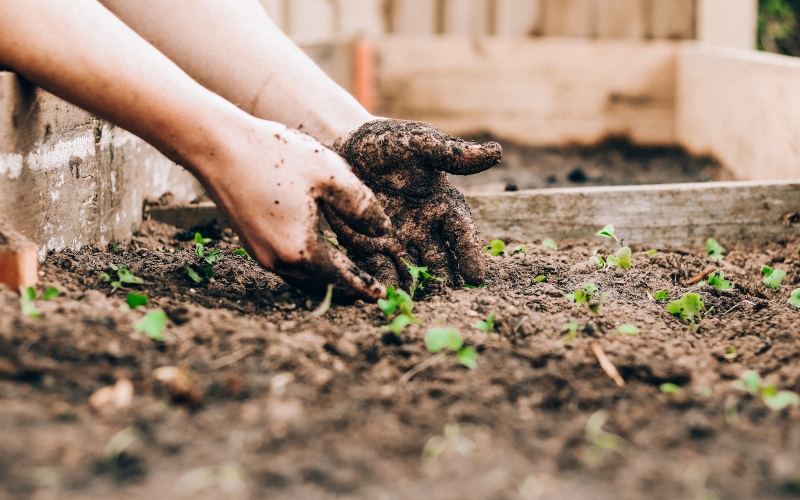
A balanced fertilizer like compost can be added so that your plants remain well-fed throughout the gardening season. Adding some coco peat to the soil will greatly improve its water-holding capacity. Finally, you can mulch the area to prevent the loss of newly added nutrients and promote the growth of good soil organisms.
Planting your vegetable garden
Once you have planned your garden, it’s time to start planting.
- You can start with seeds or transplants
Vegetable plants can either be started from seeds or you can purchase seedlings from a nursery and transplant them into your garden.
Starting from seeds is cheaper, and allows you to grow more varieties but starting from seeds is more prone to mistakes and requires more time and effort. On the other hand, starting from transplants can save time and is easier, but may be more expensive, you are limited to varieties available for purchase, and not all types of vegetables are suitable for transplanting. More information to help you choose between starting from seeds or seedlings/transplants
If you are starting from seeds, you can directly sow seeds in your garden or you can grow seedlings in smaller containers and later transplant them into your garden. However, The choice between direct seeding and transplanting seedlings grown from seed mostly depends on the type of vegetable to be grown.

Many types of vegetables benefit from being transplanted. This includes Broccoli, Cabbage, Cauliflower, Eggplant, Kohlrabi, Lettuce, Onions, Peppers, and Tomatoes.
Starting vegetable seeds and then later transplanting them in your garden has several benefits. You can get a head start on the growing season by starting seeds indoors, while it’s still too cold to plant them outdoors. You can also plant a few extra seeds and select the healthiest to be transplanted into your garden.
Starting seeds in smaller containers requires minimum space and makes it easier to care for and maintain your seedlings. This will help them get the best start possible so that they will grow into strong plants that are more resilient to pests and diseases.
Despite this, some vegetables do better when directly seeded, while others need extra care while transplanting. Types of vegetables that do better when directly seeded include beets/beetroot, radish, turnip, beans, peas, carrots, and corn, while cucumbers, melons, pumpkins, squash, and okra need to be transplanted very carefully.
- Transplant your seedlings correctly
Transplanting your seeds correctly involves transplanting them under the correct weather conditions, when the seedlings are of the correct size, and keeping enough space between the transplants.
Transplanting vegetable seedlings when they are the right size is important for a successful vegetable garden. Seedlings should be transplanted when they have developed at least two to four true leaves, usually around 4-6 weeks old. Delaying transplanting can lead to root-bound seedlings, which can lead to stunted growth and susceptibility to diseases and pests.
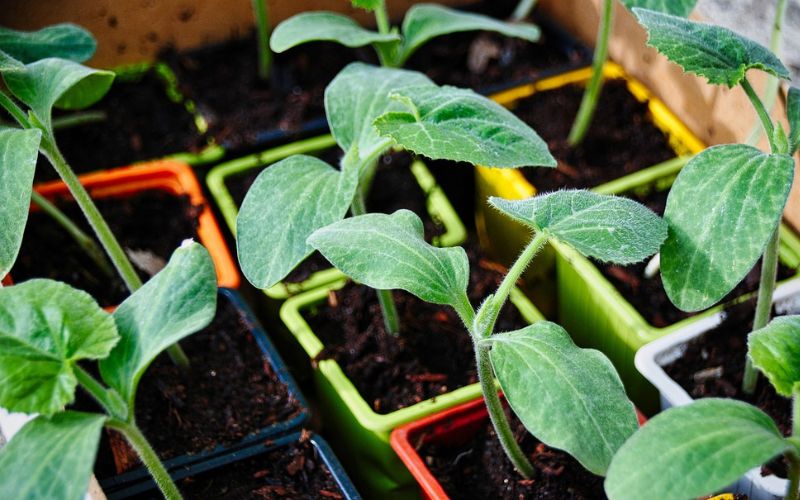
If for some reason you’ll have to delay transplanting, you may need to temporarily transplant seedlings into a larger pot. If that’s not possible, it may be better to destroy your seedlings and start again to avoid the spread of pests to nearby plants.
Transplanting vegetable seedlings can help them establish stronger root systems, leading to healthier and more productive plants. It’s important to transplant vegetable seedlings at the right time.
It’s best to transplant warm-season vegetables after the last frost date and cool-season vegetables during the fall or early spring. Plants should be transplanted when the weather is mild and into soil that’s fertile and moist. Avoid transplanting during extreme weather, such as heatwaves, droughts, or heavy rains, as this can stress the plants and hinder their growth.
When transplanting vegetable seedlings in your garden, proper plant spacing is crucial for nutrient and water availability, disease and pest prevention, and adequate air circulation. Overcrowded plants can compete for resources and create a humid environment that promotes disease and pest growth. Correct spacing allows for healthy plant growth, both above and below the soil.
Proper spacing requirements of commonly grown vegetables and herbs
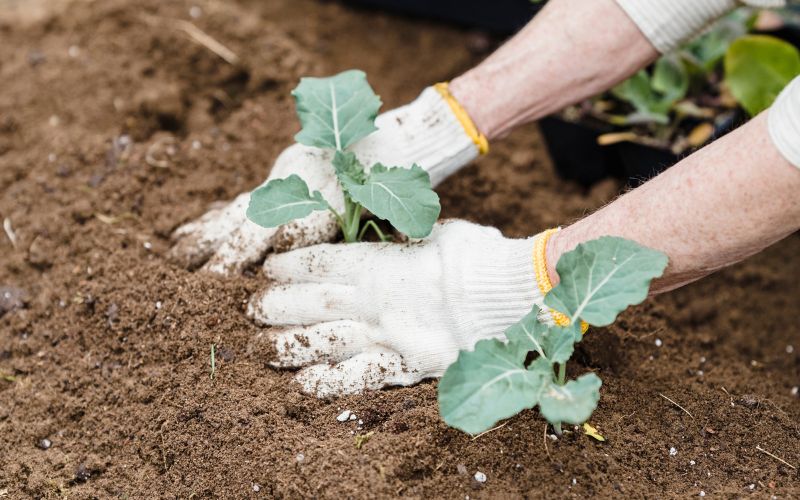
Similarly, when growing vegetables in containers, It’s important to select the appropriate container size for the type of vegetable being grown to ensure the plant has enough soil and root space to grow and thrive. If the container is too small, plants can become root-bound, leading to stunted growth, nutrient deficiencies, and pest and disease problems.
Minimum container size for commonly grown vegetables and herbs
Transplant shock is a common problem for seedlings when they are moved from indoors or a protected environment to outdoors in a vegetable garden. This can result in the wilting, yellowing, or browning of leaves, and stunted growth, which could eventually lead to the death of the plant.
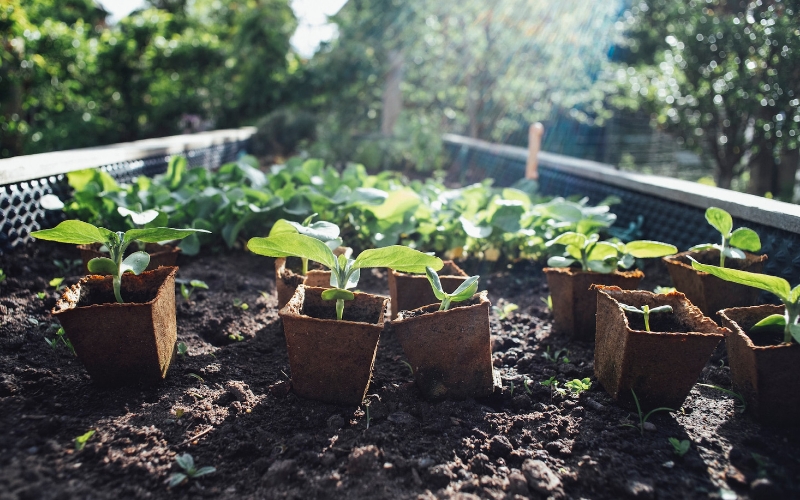
To prevent transplant shock, it’s important to properly prepare the soil, choose the right time of day and weather to transplant, avoid overcrowding, properly water the seedlings, harden them off gradually, handle the roots with care, and provide shade, if necessary.

